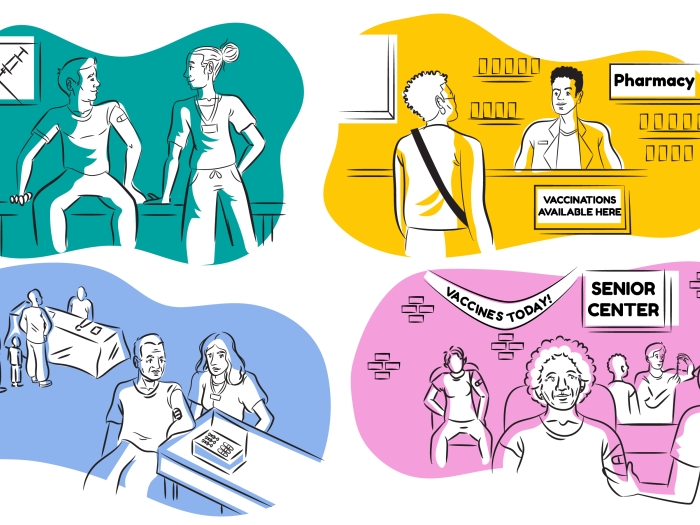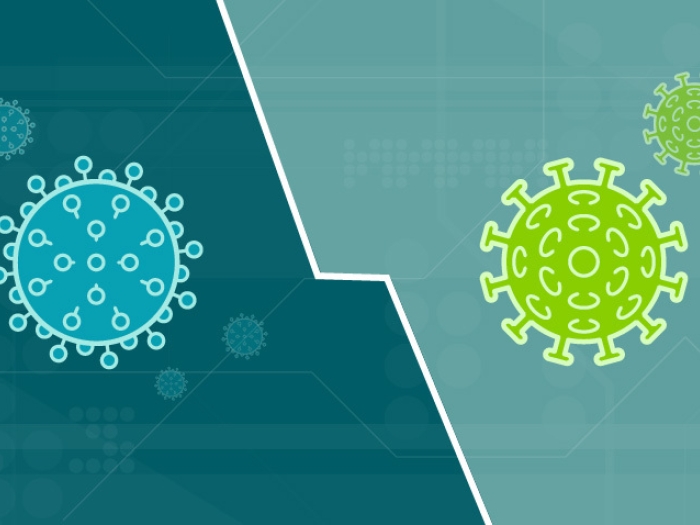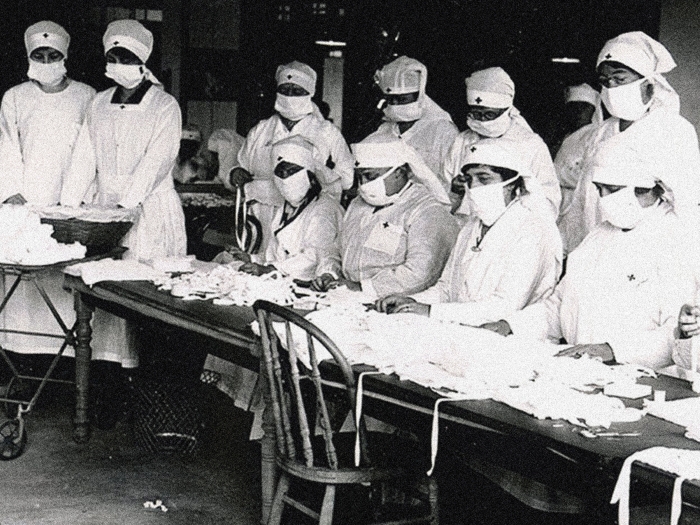From vaccines to testing, and treatment to telehealth, a quick guide to what’s different and what’s not
10:34 AM
Author |

Updated 8 a.m. May 12, 2023
Life has changed forever because of COVID-19. And the virus is still spreading, and still causing serious illness or significant disruption of ‘normal’ life.
But when the clock struck 11:59 p.m. on May 11, some of the special rules and programs put in place during the past three years ended.
That’s when the COVID-19 public health emergency declaration expired. The virus is still with us, but the official government response level has changed.
What does this actually mean for everyday people? Here’s a quick list:
1. You should still get all the doses of COVID-19 vaccine available to you now and in the future, and have your children over 6 months vaccinated with all the doses available to them. Staying up-to-date on vaccinations has been shown to help prevent serious illness and death.
Find out what doses you and your children can receive here.
Vaccinations are still free, but now you should check that the place where you’re getting vaccinated is in-network for your insurance. Pharmacies are still able to vaccinate people. If you don’t have insurance, you should be able to get vaccines for free at your local health department or other locations.
In April, a second dose of updated bivalent booster was recommended for people who are over 65 or immunocompromised.
2. You will still be able to get rapid tests, but after May 11 you may be less able to get them free.
Rapid tests for COVID-19 are still important to use when someone is sick or was recently exposed to a person with COVID-19; here’s a guide to when to use them.
The availability of free tests from the federal government’s test ordering site is ending, and so is the coverage of rapid tests by Medicare and most insurance plans.
The state of Michigan will continue to make tests available for free through many local libraries and also will continue to offer rapid antigen testing performed by professionals at these community sites. Residents of Michigan and certain other states can get free tests from this site for a while.
Major pharmacy chains will continue to sell the tests. Health departments and some clinics may still have them available for free after May 11; check your local area.
3. If you need a PCR test to tell if you have COVID-19, due to symptoms or after an exposure, your insurance may require you to pay part of the cost, either in the form of a co-pay or part of your deductible. You may also have to have a health care provider’s order.
People with Medicaid may still be able to get this kind of test for free if a health care provider orders it. Some county or municipality health departments may also offer this kind of testing; call or check their website.
If you want to get a PCR test before a trip or event, and you don’t have symptoms or a recent exposure, you may likely have to pay the full cost.
4. If you have COVID-19 symptoms or test positive, you should still isolate yourself from other people, rest, and contact a health care provider right away to find out if it is recommended that you take a prescription medicine to treat it.
If you qualify for treatment with Paxlovid or another prescription medicine because of your age or health conditions, you should start taking it within five days of the start of your symptoms. It can reduce your symptoms and your risk of severe disease.
"Even if you currently take a medicine that might clash with Paxlovid, you may be able to pause taking that other medicine temporarily or change the dose," said Preeti Malani, M.D., an infectious disease physician at Michigan Medicine who is also trained in geriatrics. "Talk to your health care provider and share with them the Michigan Medicine guide to Paxlovid interactions."
If you have Medicare or Medicaid coverage, Paxlovid will be free even after May 11. And if you have other forms of insurance or no insurance, it will be free as long as the government still has a supply. After that, your insurance may require you to pay a co-pay just like you do for other medicines.
If you experience serious symptoms such as trouble breathing, pain or pressure in the chest that doesn’t go away; skin or nails that turn pale, blue or gray; or confusion, seek emergency medical attention right away.
5. You or your children should still wear a mask in public, or to school or work, when you’re recovering from COVID-19, or if you live with someone who has it right now.
Use this CDC calculator to figure out if you or your children need to mask.
You can also consider masking in public indoor spaces if you consider yourself at high risk from COVID-19, or if you either live with or are preparing to visit someone with a high risk of severe COVID-19, especially when rates in your area are high. You can also wear a mask any other time or place for personal protection, except in certain security situations where you may be asked to lift your mask temporarily.
Masking is especially helpful in situations where a lot of people are close together in a place with poor ventilation. Masking can reduce the likelihood of catching COVID-19 from others, even if you’re one of the only people masking. Whenever you mask, use one that fits well – preferably with a KN-95 or N-95 rating, not a cloth mask.
It’s also important to wear a mask when around others, especially in health care settings, any time you have symptoms such as fever, runny nose or coughing, even if you don’t have COVID-19 or you’re not sure. This is required at Michigan Medicine hospitals and clinics.
Children and adults with fevers, vomiting, diarrhea, pink eye and any other new symptoms should stay home.
6. If you’ve been tracking local COVID-19 activity using the colorful maps provided by the CDC, they have changed and community levels based on cases of COVID-19 are no longer being given. You can still see maps based on hospitalizations, deaths and emergency department visits.
There will still be other COVID-19 data on the CDC website, the Michigan site, and many state, county and municipal websites, but it may not be as complete or as frequently updated as before. For instance, negative results on PCR tests are no longer required to be reported, so percent positivity will no longer be calculated or shared in Michigan and other places. School districts, universities and hospitals may also monitor the situation in their area and provide guidance.
Wastewater testing for the presence of genes from the coronavirus is continuing in some places; see Michigan's two wastewater dashboards here, and a national wastewater testing results site here.
7. You or your child can still see your health care providers via video or phone if they offer this option for the type of care you’re getting.
But now, you must use a video chat platform that meets strict requirements for health care, such as one based in your provider’s patient portal.
You or your child also probably need to be in the same state as the provider. A guest who is in another state (such as a parent or caregiver who is traveling or lives elsewhere) can also join the video session.
Learn more about virtual care options at Michigan Medicine.
8. If you or your children take prescription medicines that fall into the category of controlled substances (such as opioid painkillers, sedatives, some ADHD medicines, and treatments for opioid addiction), you can keep getting care from your prescriber via telehealth for now, if they allow it. A temporary rule regarding this is in place through November 11.
9. If you are eligible for hospital-level care at home for any condition under the program that started because of COVID-19, you can still receive it if your care team recommends it.
Learn more about Michigan Medicine’s Hospital Care at Home program.
10. If you have Medicaid or the Healthy Michigan Plan coverage, or your child has CHIP coverage, watch your mail, text messages or email for a very important message from your state.
Until recently, a special pandemic rule was in place. For three years, it temporarily lifted a yearly requirement to prove someone is still eligible for these income-based programs.
Now, if you want to keep this kind of coverage, you will need to prove every year that your income still makes you eligible. If you have Medicare with Medicaid as supplemental coverage, you may also have to submit information about your assets.
Your state will send you information at the address, email address or cell phone number they have on file for you. See this article for more about what you should do and how to get help.
If you are no longer eligible for this kind of coverage because your income has gone up, other low-cost coverage may be available to you through healthcare.gov. You can enroll at any time after losing Medicaid or CHIP coverage.
11. The spread of airborne viruses and allergens can be reduced by improving ventilation and air purification in places such as your children’s school or daycare, your home, your work location, or your place of worship.
Cleaner indoor air helps reduce the risk of multiple diseases and allergic reactions, and can be achieved by changing central air handling settings or equipment, and adding portable air purifiers. The state of Michigan offers free air purifiers to K-12 schools and daycares.
This list has been reviewed by Preeti Malani, M.D., Chad Ellimoottil, M.D., M.S., Robert Ernst, M.D., and Renuka Tipirneni, M.D., M.Sc.

Explore a variety of health care news & stories by visiting the Health Lab home page for more articles.

Department of Communication at Michigan Medicine
Want top health & research news weekly? Sign up for Health Lab’s newsletters today!





